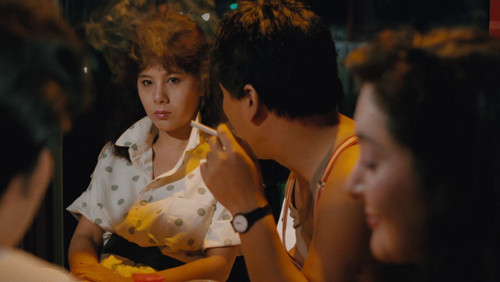Pioniere des wilden Westens (1931)
67KPioniere des wilden Westens: Directed by Wesley Ruggles. With Richard Dix, Irene Dunne, Estelle Taylor, Nance O’Neil. A newspaper editor settles in an Oklahoma boom town with his reluctant wife at the end of the nineteenth century.
“Vilified in modern times as one of the weakest and/or worst Oscar Best Picture winner, and spanked as u0026quot;very racist and very badu0026quot; by one author, u0026quot;Cimarronu0026quot; does not deserve such condemnation. It won Best Picture because the script is high concept, the type of overarching, epic story that Hollywood has always rewarded.u003cbr/u003eu003cbr/u003eIts script tells the fictional tale of adventurer and pioneer Yancey Cravat (Richard Dix) who, along with his wife Sabra (Irene Dunne), takes part in the 1889 land rush into Oklahoma Territory, along with thousands of others. In the film, these pioneers stake a land claim and build a new town, called Osage, out on the prairie.u003cbr/u003eu003cbr/u003eThe plot spans some forty years in the Cravatu0026#39;s lives, filled with dreams, accomplishments, sorrow, and interaction with a variety of characters, from prim and proper Mrs. Wyatt (humorous Edna May Oliver) to town thug Lon Yountis (Stanley Fields). Along the way we encounter: gun toting outlaws; dust; a strange gospel meeting; bullies; buildings and walkways made of wood; more dust; the trial of an u0026quot;immoralu0026quot; young woman; politicians; and still more dust.u003cbr/u003eu003cbr/u003eThe plot is structured to give most of the filmu0026#39;s runtime to the Cravatu0026#39;s lives during the 19th century. As we move into the 20th century, the plot speeds up; characters age a little too quickly. That is a problem I have with the script. The filmu0026#39;s tone starts out enthusiastic and rowdy, and ends stoical and long-suffering.u003cbr/u003eu003cbr/u003eBu0026amp;W photography is acceptable. There are lots of wide-angle shots, as we would expect for a story set in the wide-open spaces. Prod design and costumes are elaborate and probably accurate for the era. Casting is acceptable. For a 1920s type film, acting is predictably melodramatic. But with his eyes all bugged-out, Richard Dix seriously overacts, even for that era.u003cbr/u003eu003cbr/u003eIn retrospect, there may have been other films as deserving, or more so, for Best Picture of 1931. But at the time, this big-budget Western was almost certainly a predictable winner. I found the story only mildly interesting. But then Iu0026#39;m a creature of a more modern era. And I think viewers would do well to consider u0026quot;Cimarronu0026quot; a valid film, one that now gives us some historical perspective, both on Hollywood cinema and on American history.”









